The Longest Five Minutes presents its basic fantasy tale as a series of flashbacks experienced by its amnesiac main character during the game’s final battle. It takes an otherwise generic retro turn-
based RPG and turns it into something special. Wait, I’m already at the end of the review? How did I get here?
Oh wait. It’s all coming back to me now.
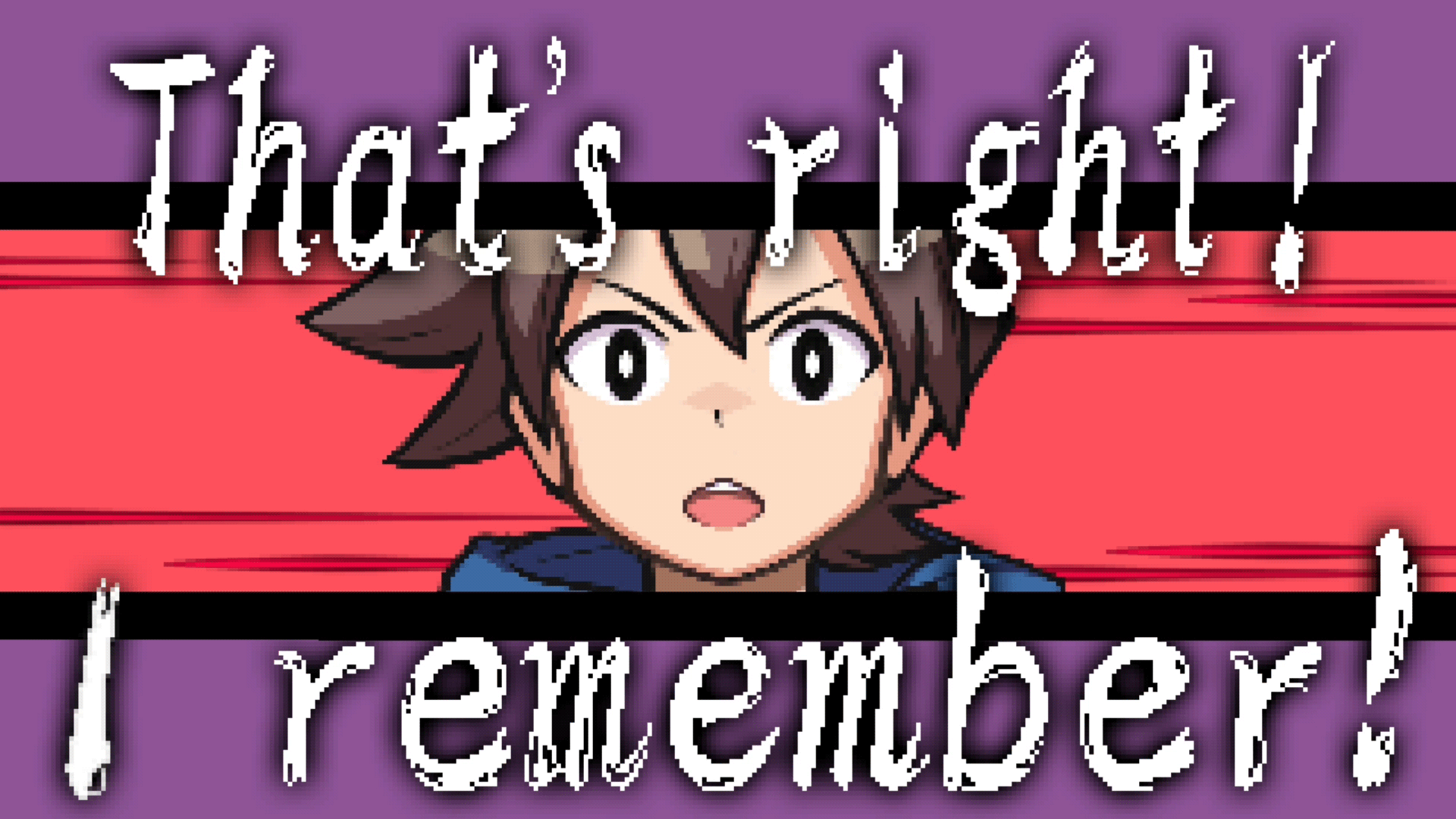
This happens a lot.
The Longest Five Minutes opens with a party of four heroes facing off against the game’s final boss, the all-powerful Demon King. The travelling they have done, experience they have gained and skills they have learned has all led to this final confrontation. If only their leader, the aptly-named Flash Back, could remember any of it.
Flash’s memory has been wiped. He doesn’t know why they’re fighting the Demon King. He doesn’t recall battle strategies developed over years of adventuring with healer Clover, bard Regent and ninja Yuzo. He doesn’t even remember his own signature move. Can he recall it all before the Demon King triumphs?
Of course he can. That’s the whole point. As the Demon King battle clock slowly ticks towards the five minute mark, seconds at a time, Flash recalls his hero’s journey. One of the first flashbacks takes him back to his hometown, where he and his party of low-level adventures prepare to travel to Stockwood, where the king will give them their first mission.
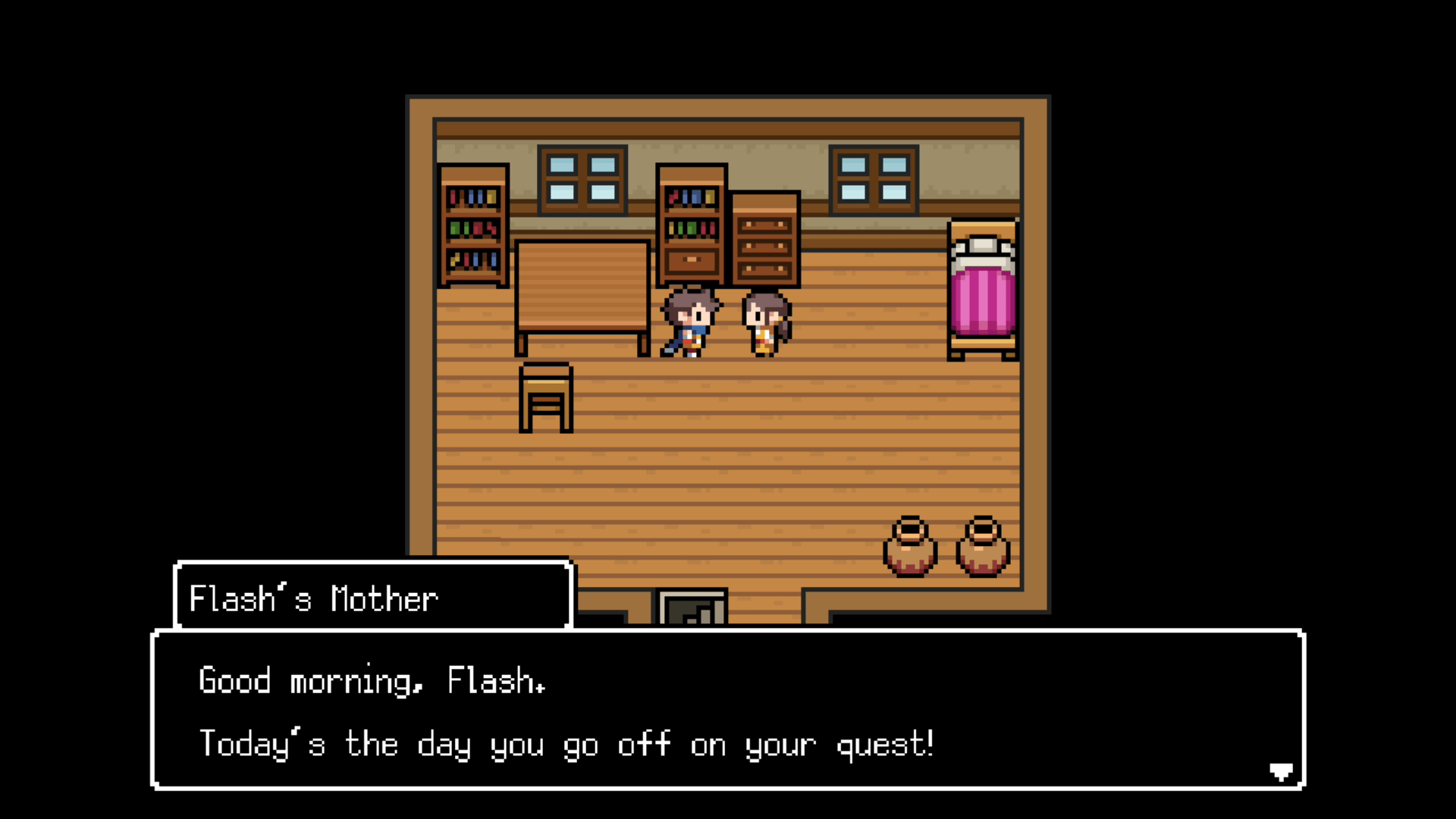
Flash-forward and the party is in Stockwood. The king tasks them with journeying to the neighbouring town of Gastonbury, where a mysterious demon-spawning fog has taken hold. They board a train to Gastonbury, but their ride is interrupted by the introduction to the game’s simple turn-based battle system.
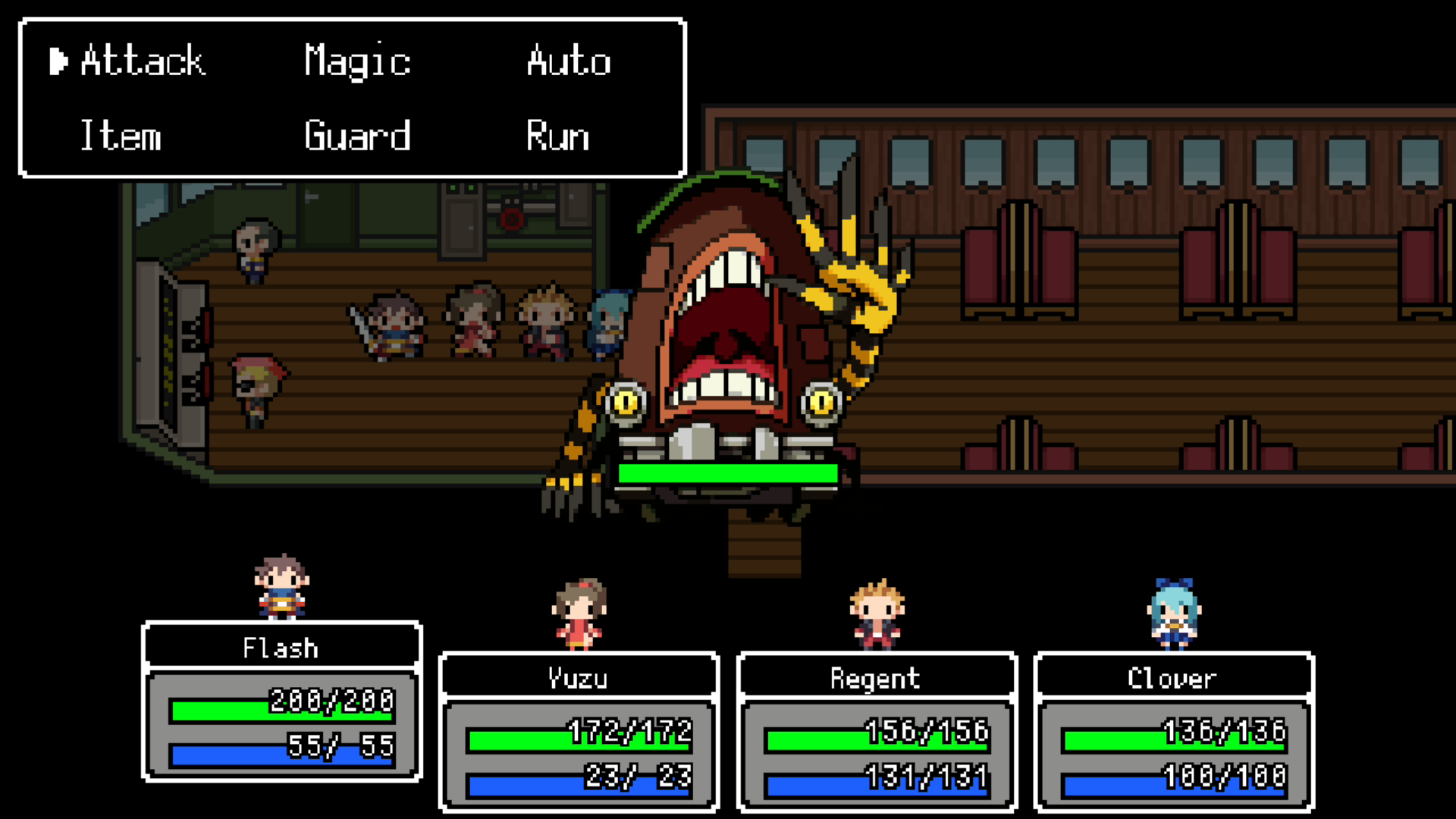
After the fight, the monster is defeated, but the train tunnel is blocked. The party must take a more roundabout route, through a dangerous moss-covered cave. AKA your basic retro dungeon.
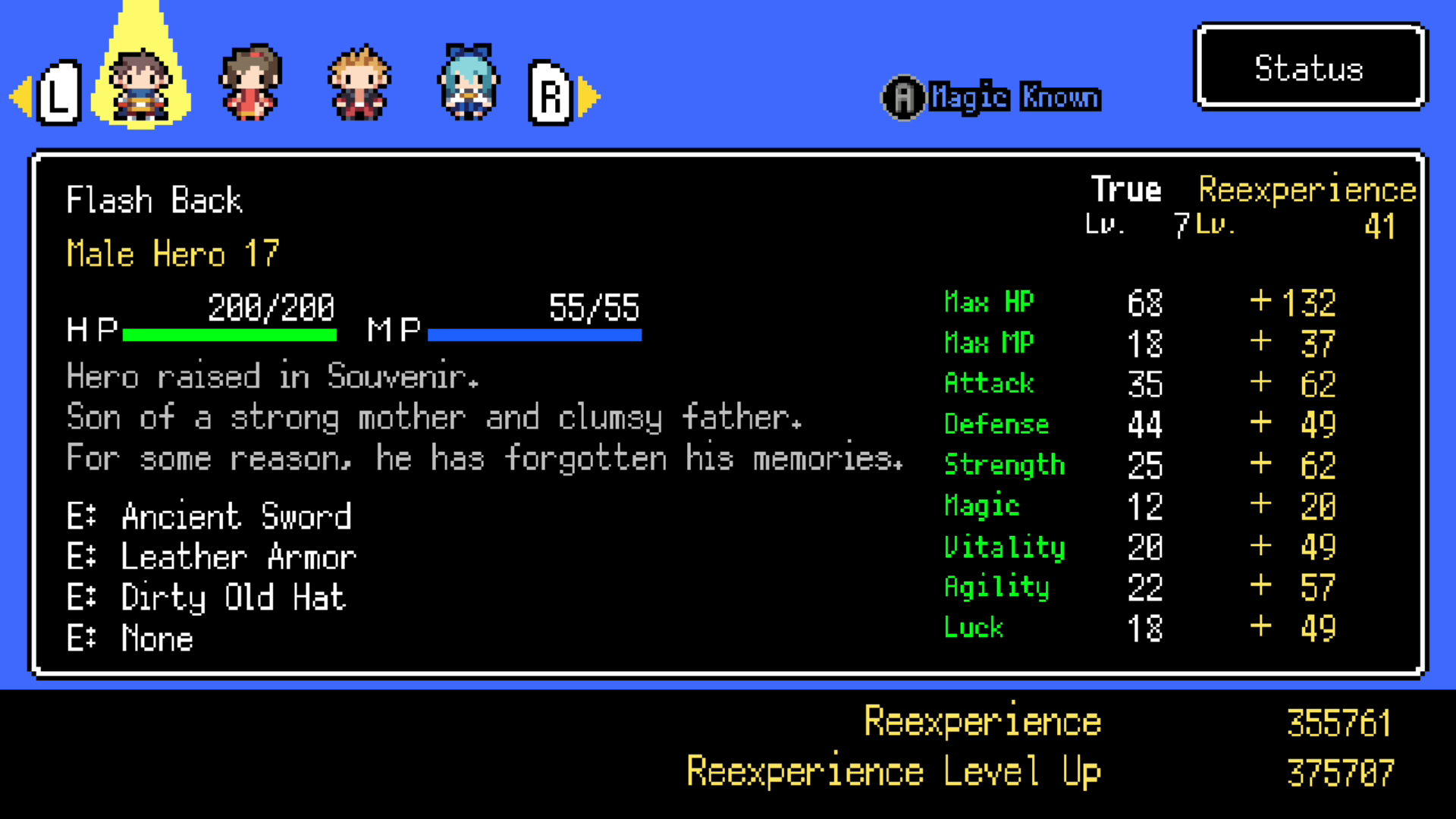
Each memory has a “true”level, which is the level the memory was original experienced at. The “reexperience” level is the party’s actual level, which applies bonus to the true level.
Once they reach the exit the flashback ends, and it’s back to the Demon King battle. Flash uses the knowledge or skills he’s recalled to progress the battle a few more seconds. When he hits another stumbling block, another flashback begins.
And so the game goes. The story of Flash and friends’ odyssey to confront the Demon King and save the world unfolds one flashback at a time. The characters grow more powerful the further they go in the story. It’s not always sequential – some of the more story-focused flashbacks hop back to when the party members are kids or revisit previous areas to add more context. But they all lead to that final, fateful five minutes.
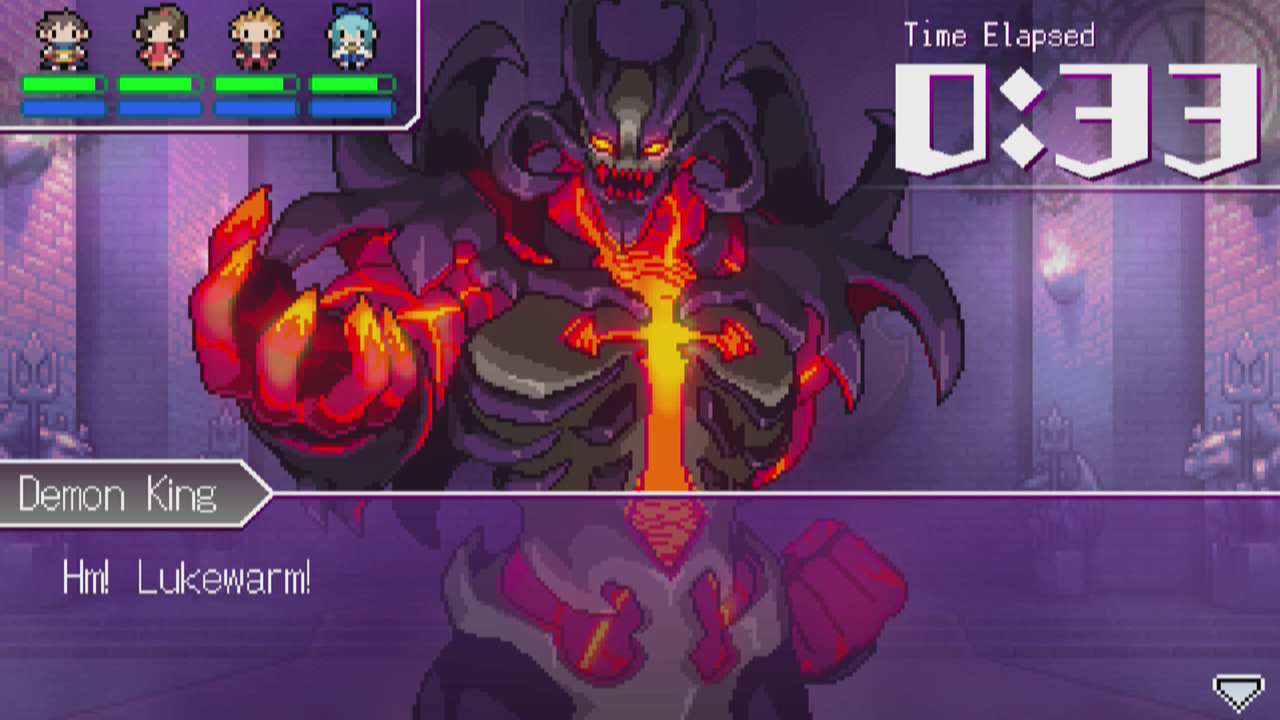
While the memories are all turn-based RPG, the final battle plays out more like a visual novel.
Initially I thought the flashback structure of The Longest Five Minutes was the coolest thing ever. To have the game’s final battle play out like a visual novel with simple dialog and action choices, then shift to old-school Japanese role-playing for the flashbacks — how brilliant is that? But as I made my way deeper into my 12-hour play through, the brilliance began to fade.
The traditional turn-based RPG elements of The Longest Five Minutes aren’t very exciting. Combat is super basic — fight, cast, heal, repeat. I spent most of the game using the auto-battle function, as none of the fights were challenging enough to require thoughtful strategy.
[review image=”https://i.kinja-img.com/gawker-media/image/upload/t_original/narpequqntsjqrg6dcgk.jpg” heading=”The Longest Five Minutes” label1=”BACK OF THE BOX QUOTE” description1=””Perhaps we had better start at the beginning”” label2=”TYPE OF GAME” description2=”Turn-Based RPG Taken Out Of Turn” label3=”DEVELOPER” description3=”Nippon Ichi Software, SYUPRO-DX” label4=”LIKED” description4=”The concept is brilliant and the music is lovely.” label5=”DISLIKED” description5=”RPG combat is too basic and easy, story doesn’t really pick up until the very end.” label6=”PLATFORMS” description6=”Switch (played), PC, Vita” label7=”RELEASE DATE” description7=”Now” label8=”PLAYED” description8=”Completed game in about 12 hours, re-loading a save afterwards to make a different choice and see another ending.”]
The flashbacks, initially exciting, quickly become formulaic. There’s a thing the characters need in a nearby dungeon. Go to that dungeon, battle through X number of areas, confront the boss, auto-battle it to death, get the item, flashback over. Each flashback has a couple of side quests thrown in to help break up the monotony, but they’re usually simple, uninspired fetch quests.
Making matters worse, the game’s unique structure strips away one of the biggest joys of playing through a lengthy turn-based RPG: collecting increasingly powerful armour and weapons. Though dungeons are filled with treasure chests containing fresh gear and shops are always stocked with the latest and greatest stuff, none of it carries over between flashbacks.
Each new memory starts the party off with specific equipment and a set gold allowance for items and upgrades. If it’s all going to go away in the next sequence, what’s the point?
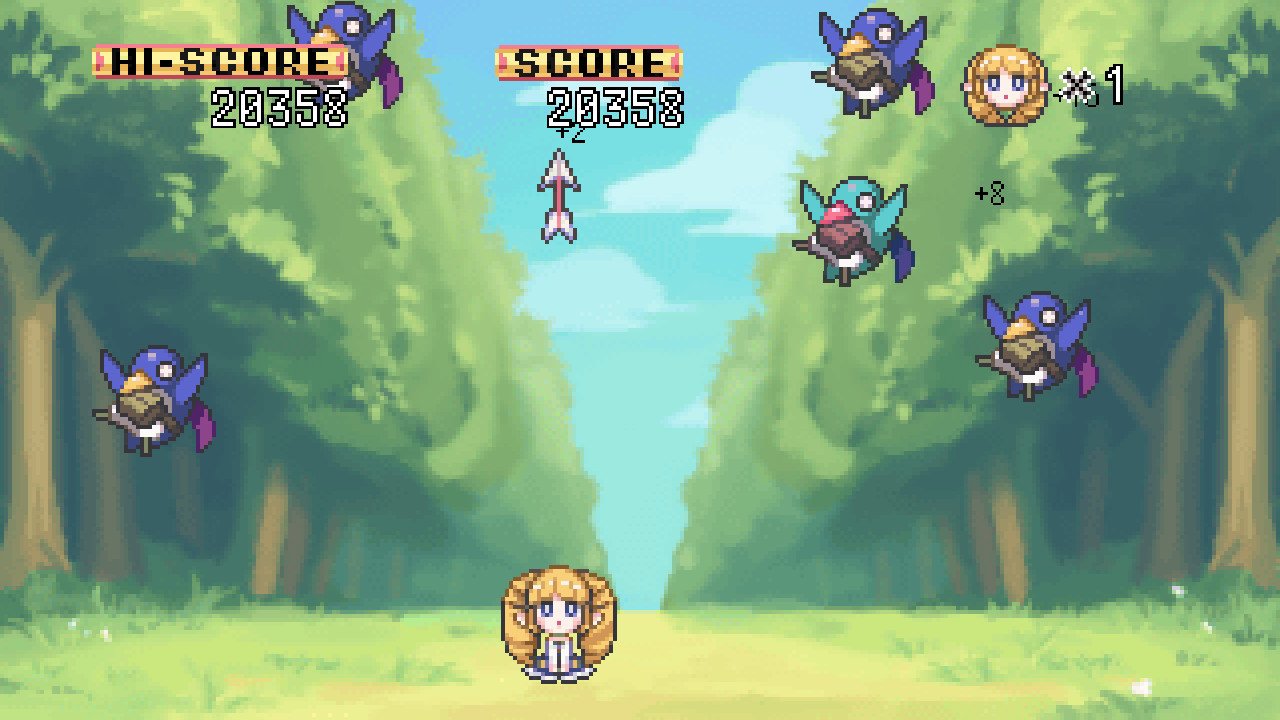
One exception to the boring side quest thing is this arcade mini-game. I spent an hour and a half trying to get the high score.
The best flashbacks in The Longest Five Minutes are the ones that focus on the relationships between the game’s characters. In one, when the full extent of their quest is revealed, two of the party members decide it’s too much responsibility to bear.
In another, a character decides to embrace a tragic destiny for the greater good. There’s something special in these moments. I just wished there were more of them, and that most of them weren’t loaded into the final quarter of the game.
Developers Nippon Ichi Software and SYUPRO-DX have a very good idea with The Longest Five Minutes, but they didn’t do enough with it. The RPG system is painfully basic. The story pacing is uneven. Decisions made in flashback sequences changing the course of battle with the Demon King is introduced late in the game, but it’s all over before that intriguing idea can be further explored.
The Longest Five Minutes presents its basic fantasy tale as a series of flashbacks experienced by its amnesiac main character during the game’s final battle. It takes an otherwise generic retro turn-based RPG and turns it into something special – but it could have been so much more.
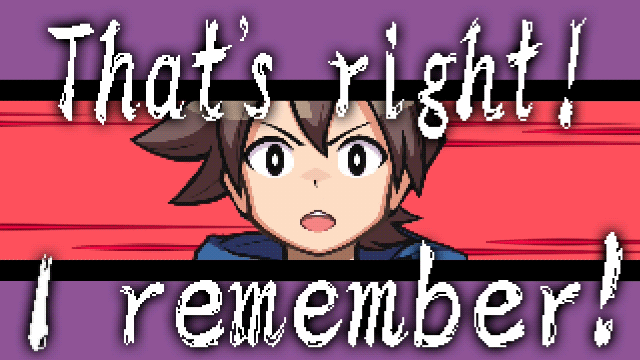
Comments
2 responses to “The Longest Five Minutes: The Kotaku Review”
So it’s less “Remember a trash can.” and more “Don’t believe his lies”?
capamericaiunderstandthatreference.jpg